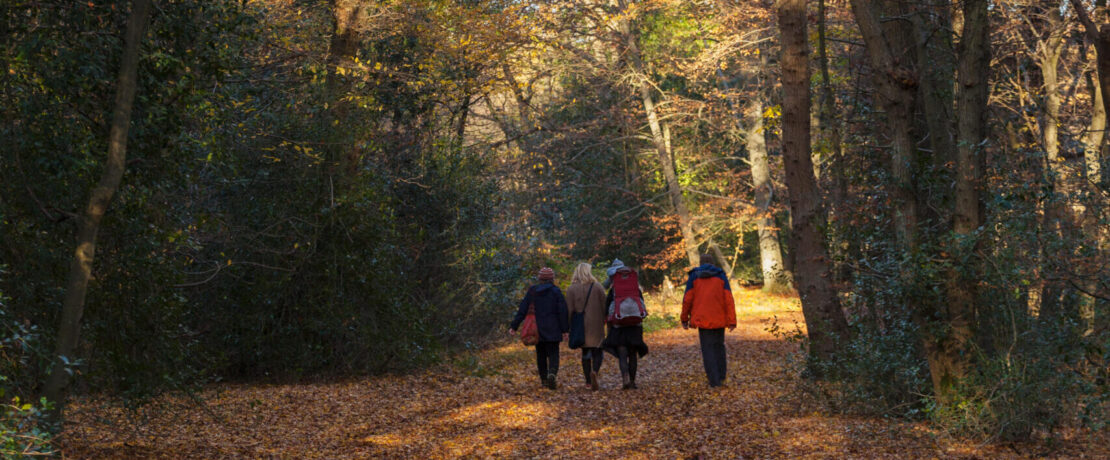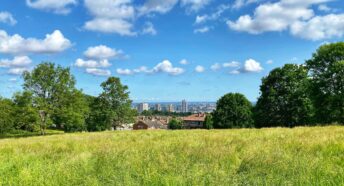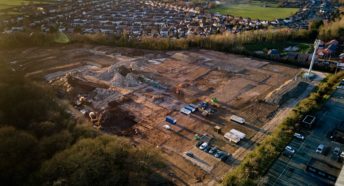Bettering the Green Belt
Those who claim Green Belt is a waste of space are ignoring the very real benefits it brings to people, nature and the planet – if only we make sure it gets the investment it deserves, says Sam Relph.
CPRE has many notable successes to its name over the past century, but perhaps none that it is so closely associated with today as the creation, and continued protection, of the Green Belt. Rolled out nationally in 1955, Green Belt designation allows local authorities to protect the open land on the fringes of urban areas from development in all but exceptional circumstances. Its aims include checking urban sprawl, safeguarding the countryside from encroachment, and encouraging housing development on sites close to where people already live and work.
By and large, this totemic legislation must be deemed a success. Green Belt became one of the great achievements of the post-war era; an assurance to people in urban areas that they would be able to reach green fields and feel a connection to the countryside that so many had fought for in two world wars. Today, 12.5% of England’s land area is under Green Belt protection, and urban and rural environments have benefited.
Brown not green?
In recent years, however, the Green Belt has come under constant and increasing pressure, including the continual redrawing of its boundaries and – as CPRE’s State of the Green Belt 2023 report has shown – with over 200,000 houses currently earmarked for Green Belt land in adopted or draft local plans. Meanwhile, Green Belt has been blamed for a whole manner of ills: dragged into culture wars as a bastion of middle-class complacency; being portrayed as a restrictive band, preventing homes for a new generation being built.
Then some say it’s even the wrong colour – too brown or grey, rather than green – since not all Green Belt land is pristine countryside but also contains wasteland, derelict brownfield and inaccessible or semi-industrial sites, such as sewage treatment works and intensively farmed agricultural units.
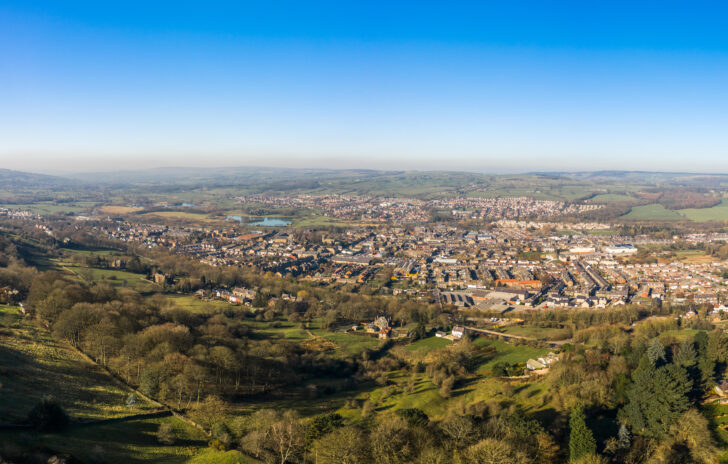
The Green Belt is nothing if not the legacy of a vision for the future of the countryside, but it was conceived in a different era. As we face new challenges, is the Green Belt now irrelevant?
To answer the question of whether it’s still worth looking after the Green Belt, we need to consider how well the Green Belt looks after us.
As economist Sir Dieter Helm has argued in his essay ‘In Defence of the Green Belt’, those who criticise Green Belt land for getting in the way of development tend to ignore its natural capital: the enormous value it already delivers in terms of public health and ecosystem services. ‘The Green Belt is an asset,’ he writes, ‘[that] should be on the nation’s balance sheet.’
He dismantles the argument that because some Green Belt land is currently neither green, productive nor accessible enough to deliver these services, it should instead be given over to development: ‘[A] third alternative to either the current state of the Green Belt or new housing and other development is obvious: a much improved and enhanced Green Belt.’
Combating climate change
Consider the climate emergency, which promises more floods, more droughts and increased risk of wildfires. To protect the Green Belt from these threats is also to protect the towns and cities it surrounds. Relatively small investments in creating ponds and wetlands, ‘rewiggling’ streams to restore floodplains, and planting more trees and hedgerows could help the countryside soak up water and protect nearby towns against flooding. They would also help prevent tinder-dry grassland going up in flames during long, hot summers.
In 2015, the government’s Natural Capital Committee recommended creating over 350,000 hectares of new woodland and wetland on Green Belt and other land around towns and cities. CPRE is calling for that to become a reality, while a number of network groups are also championing local planting projects.
Nature and nourishment
The nature crisis threatens countless species, including the pollinators that are the cornerstone of our food chain. Revitalising our Green Belts with wildlife corridors, and linking these to sustainable farming, rewilding or other nature-friendly projects, will not only enhance the beauty and biodiversity of the countryside, but also inspire urban dwellers who want to care for wildlife, or eat locally grown food.
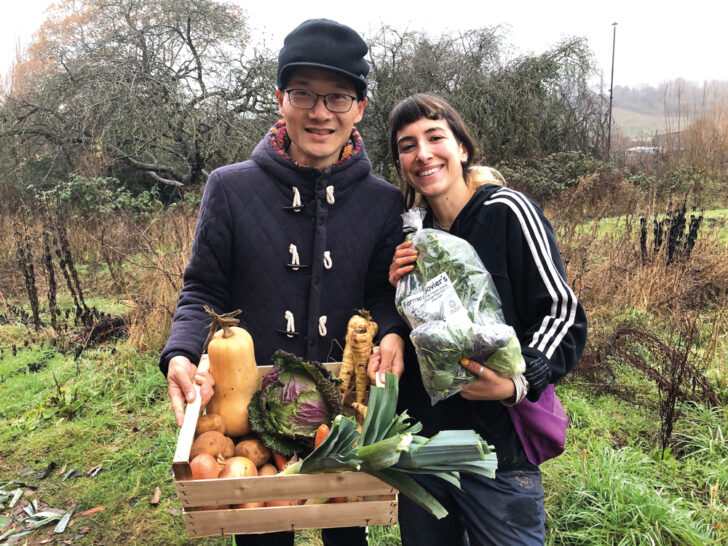
Take Sims Hill Shared Harvest, a community-supported agriculture scheme growing vegetables four miles from central Bristol. The project began in 2010, when the city council made a six-acre plot of Grade 1 agricultural land in the Green Belt available to growers who wanted to serve the community. Run as a member-owned cooperative, Sims Hill now produces veg boxes for around 160 local households, as well as distributing produce to food banks and community groups, and has expanded its work to a nearby site, Grow Wilder, in partnership with Avon Wildlife Trust. Aiming to inspire a new generation of growers and improve food security in the face of climate change, it’s a prime example of a Green Belt project that connects people with the land while providing a sense of community.
Countryside next door
Green Belt land remains the countryside next door for around 30 million people living in our largest towns and cities. During the pandemic, it became more important than ever to many urban dwellers as their primary connection with nature and the countryside.
One such local space is Rimrose Valley Country Park, a rare green expanse in the heavily built-up Liverpool borough of Sefton. The park has been greatly improved for public recreation and enjoyment over 30 years, and includes two sites of special local biological interest, providing habitat for a variety of wetland, woodland and grassland species.
Yet the future of Rimrose Valley currently looks uncertain, with National Highways planning to run a dual carriageway serving the Port of Liverpool through the heart of the park.
It’s one of numerous Green Belt sites that local communities and CPRE groups are campaigning to save, despite their supposedly protected status.
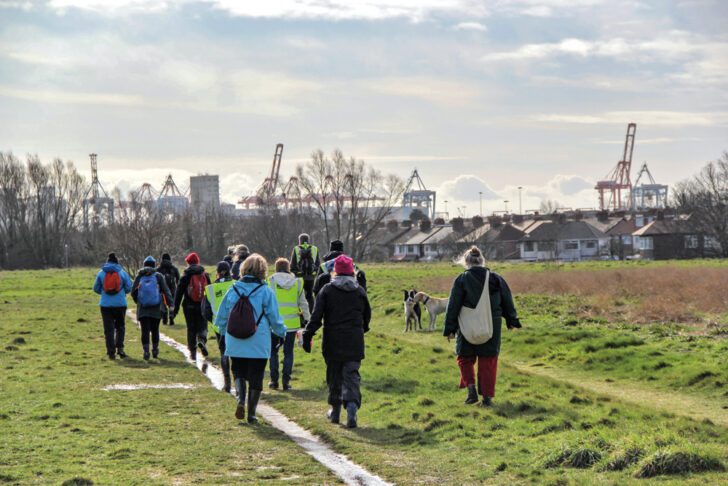
Going, going, gone?
Much of the current pressure on Green Belt is driven by housing need. Yet CPRE’s research suggests that releasing Green Belt land for development results in little of the affordable and social housing that communities most urgently require. Of 13 recently approved and developed Green Belt projects, only 5% of the resulting housing was social housing, and consistently less affordable housing was provided overall than was called for by local planning policy.
‘The lack of affordable homes is every bit as acute in the countryside as it is in our towns and cities,’ says Paul Miner, head of policy and planning at CPRE. ‘There’s no question we need to build hundreds of thousands of new homes a year. But there’s a very real debate about where they go, who they’re for and how much they cost.
‘What’s clear is that we need social housing, and new homes that are affordable in perpetuity; not more executive housing on Green Belt land.’
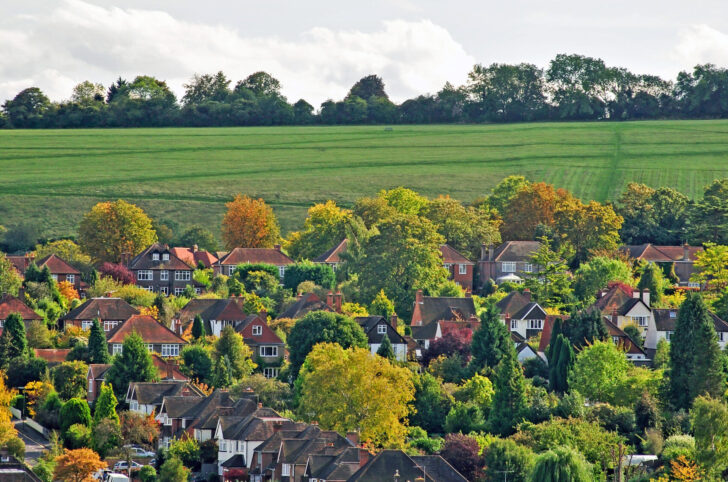
Once Green Belt land is released for development, it’s usually gone for good. That’s why CPRE believes it is critical that the original commitment to the permanence of Green Belts is maintained in planning policy, with alterations only taking place in truly exceptional circumstances.
‘Much of the new housing we need can go on suitable brownfield land – we have enough for 1.2 million new homes, and these sites even include some sites that are currently within the Green Belt,’ says Paul. ‘Developments specifically of affordable housing can also be built on Green Belt land on the edge of villages, even when the land is greenfield. But that means acting with caution – and being extremely careful to continue protecting publicly accessible historic parkland, rights of way and local wildlife sites.’
Room for improvement
Green Belt land needs not only protection but also investment, to realise its full potential for people, nature and the planet. Yet, as CPRE research has shown, public funding for Green Belt has historically lagged behind that given to the rest of the countryside.
Currently, just over a quarter of farmland in the Green Belt is covered by public agri-environment funding schemes that aim to enhance its value for nature. To improve biodiversity and food production, CPRE wants to see at least half of Green Belt farmland covered by these schemes. It is also calling for the government’s proposed Land Use Framework, due this year, to utilise planning, farming and forestry policies and programmes in a joined-up way to protect and enhance the Green Belt.
Above all, the Green Belt deserves investment for its original purpose, as the countryside next door for so many of us. We need to ensure that those living in towns and cities see the Green Belt as their own: a place for recreation and a natural national treasure for all to enjoy, made accessible by footpaths, bridleways, cycle paths and people-friendly spaces. To safeguard the Green Belt for the generations to come, we must inspire everyone to value it.
Download State of the Green Belt 2023
About the author
CPRE’s former Media Relations Lead, Sam Relph is passionate about communicating solutions to climate change. He now leads the development and execution of a global media strategy to support the International Sustainability Standards Board.
